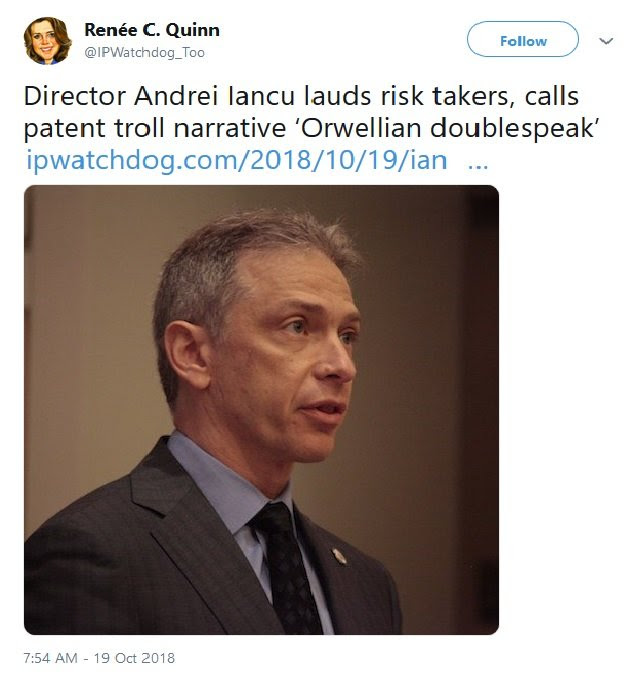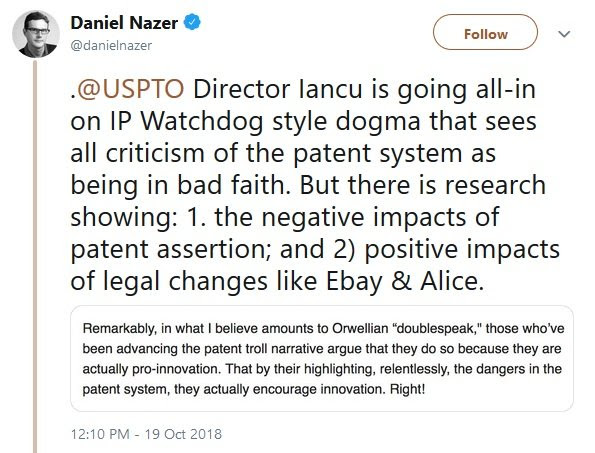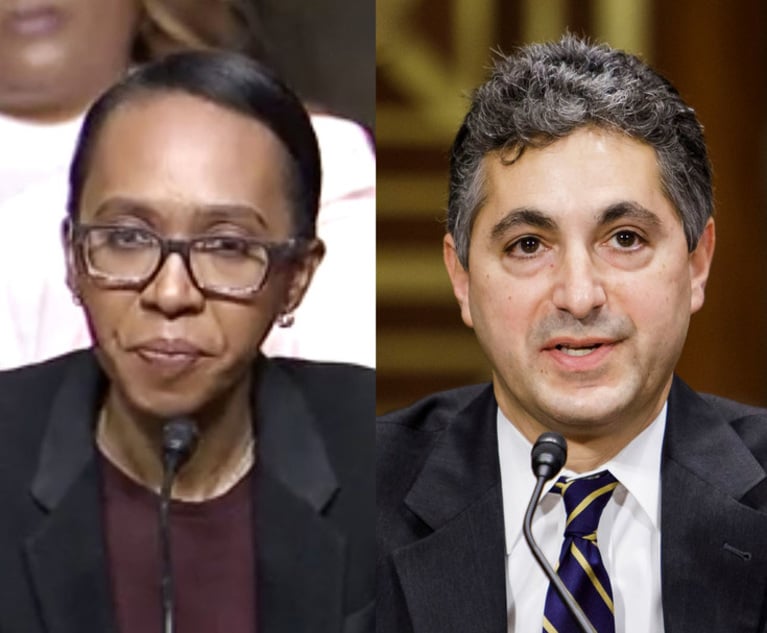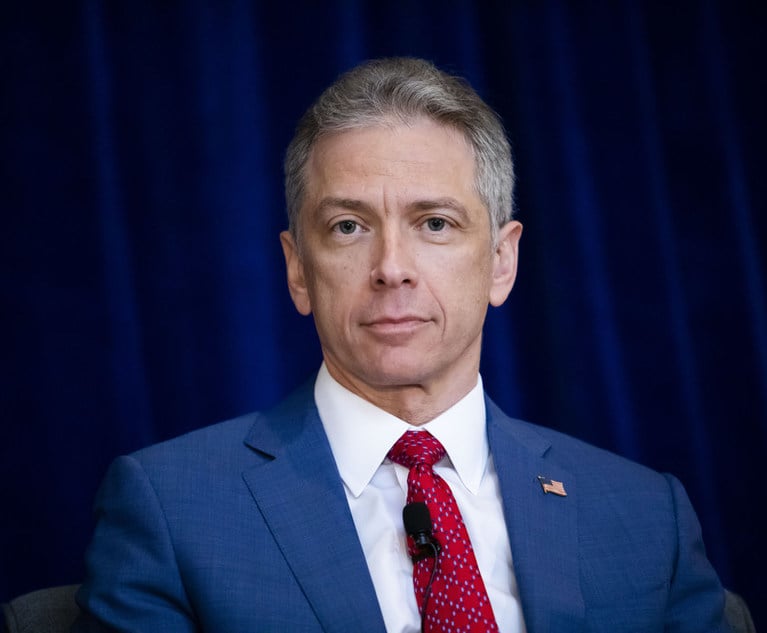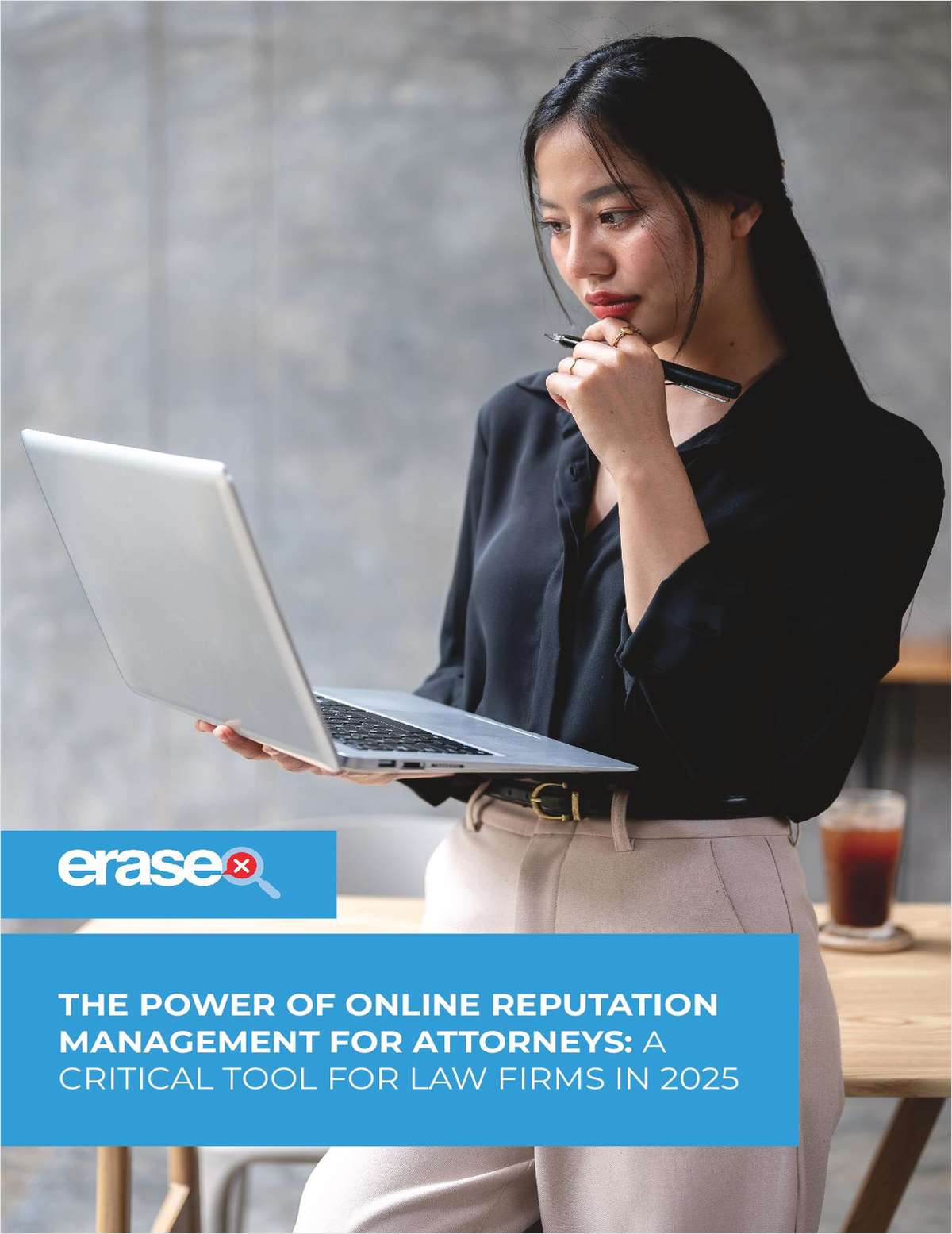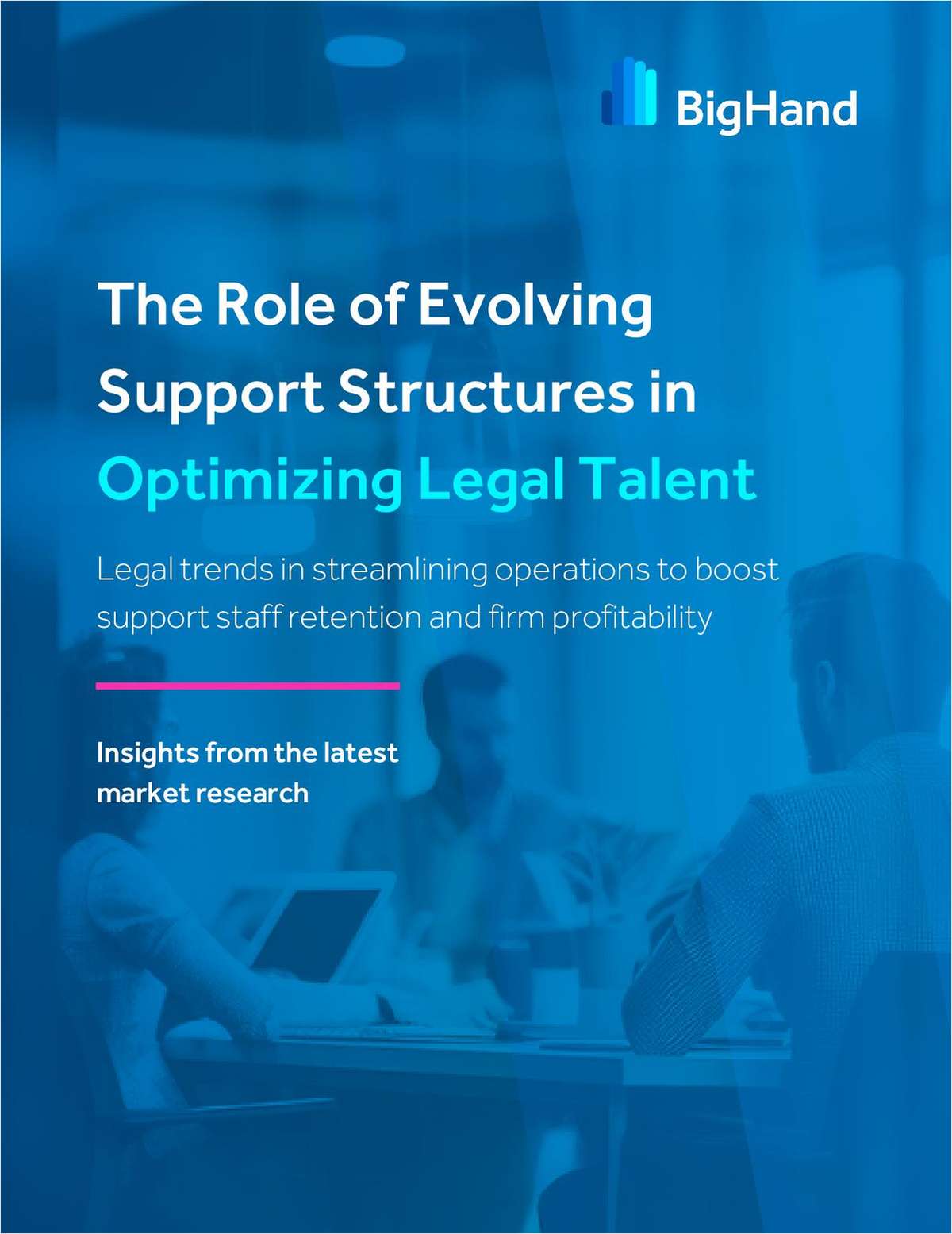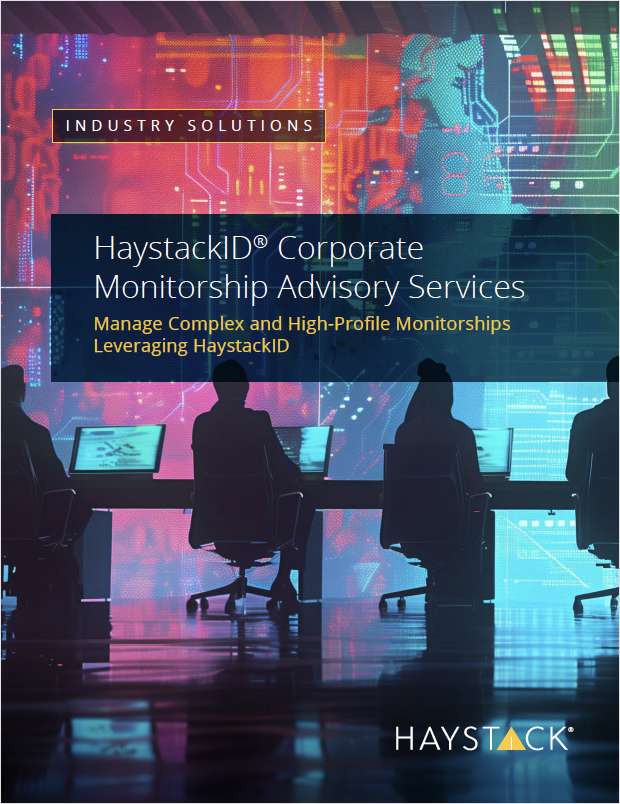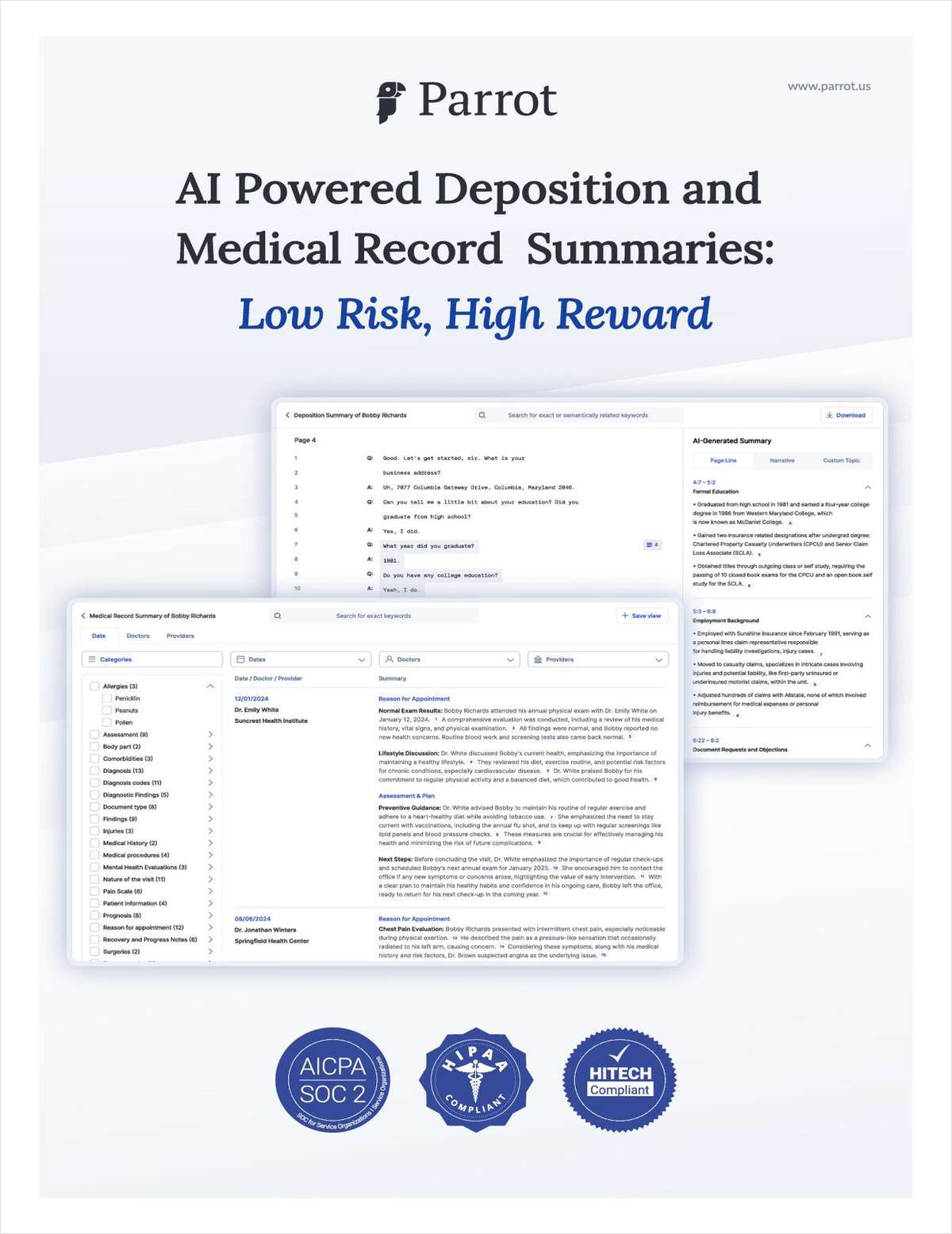Skilled in the Art: I'm Back ROSITAs! Plus, Term 2018 Gets More Idiosyncratic, and Andrei Iancu Lets His Hair Down
The U.S. Supreme Court is taking up the question of whether the U.S. government is a “person” who can petition the Patent Trial and Appeal Board within the meaning of the America Invents Act.
October 30, 2018 at 10:00 PM
9 minute read
Welcome back to Skilled in the Art. I'm Law.com IP reporter Scott Graham. I was away most of last week on vacation, but am pleased once again to connect with you, the Readers of Skilled in the Art. It never fails; all kinds of stuff happens when I take a few days off. Cert grant, CVSG, 101 motions granted, en banc petitions denied, orders cracking on Judge Gilstrap, turning him loose, or both in one. We've got a lot to get to! As always, you can email me your thoughts and feedback and follow me on Twitter.
➤➤ Would you like to receive Skilled in the Art as an email? Sign up here.
Supreme Court Finding Its Niches in IP
The 2018 term just got more interesting for intellectual property. Well, slightly more interesting. The Supreme Court continued to pick small, niche issues with its cert grant in Return Mail v. USPS. The question presented is whether the U.S. government is a “person” who can petition the Patent Trial and Appeal Board within the meaning of the America Invents Act.
That seems pretty narrow. The government has not been a frequent petitioner at the PTAB. But … you can always expect the unexpected when the Supreme Court takes up AIA cases.
Remember, the word shenanigans in Cuozzo has spawned a line of Federal Circuit case law. Oil States' talk of takings and due process has produced a flurry of filings. And loose language in SAS Institute convinced the PTAB that it must decide each challenged claim on every asserted ground, even though petitioners didn't ask for ground-by-ground review. So who knows what goodies will be in store in Return Mail?
Meanwhile, the court on Monday asked for the solicitor general's views in Ariosa Diagnostics v. Illumina. At this point, I have to make a confession: I find this about the most boring patent issue on earth, and I avoided writing about it while it percolated through the Federal Circuit. But now the Supreme Court has flushed me out. The question presented is:
“Do unclaimed disclosures in a published patent application and an earlier application it relies on for priority enter the public domain and thus become prior art as of the earlier application's filing date, or, as the Federal Circuit held, does the prior art date of the disclosures depend on whether the published application also claims subject matter from the earlier application?”
Thrilling, right? Weil Gotshal & Manges partner Edward Reines told the Supreme Court for Illumina that this is “an exceedingly narrow question of rapidly diminishing importance,” as it applies only to pre-AIA patents. Wilmer Cutler Pickering Hale and Dorr partner Thomas Saunders disputes this for Ariosa, but notes that “millions of patents affecting large swaths of the economy continue to be governed by pre-AIA law.”
I have no idea which one of them is right, but I'm hoping the SG's office turns thumbs down. The idea of the Supreme Court wrestling with this over an hour of oral argument does not get my writing juices flowing.
Director Iancu, Tell Us What You Really Think
You know who is doing interesting things lately in patent law? Andrei Iancu. The USPTO director spent the first nine months of his administration preaching neutral themes like balance and predictability, even as lawyers whispered that his true plan is to put patent owners back in the saddle.
Now Iancu has begun letting his hair down, and it looks as if the whisperers were right. At an Oct. 18 speech to the Eastern District of Texas Bar Association, Iancu declared that it's high time to give the “patent troll” narrative a rest.
“What encourages more folks to take risks and become entrepreneurs and inventors? Is it stories highlighting the success of risk-taking and the personal and public gratification of invention, or is it stories highlighting green monsters under bridges and the faults in the patent system?” he asked.
Iancu issued his own taunt at purveyors of the patent troll narrative—basically, large swaths of the tech, banking and generic pharma industries, among others. “By their highlighting, relentlessly, the dangers in the patent system, they actually encourage innovation. Right!” Iancu said.
The director followed that up with an Oct. 25 speech to the American Intellectual Property Law Association announcing a new proposed procedure for amending patent claims during AIA proceedings. “It is important to ensure that post grant proceedings are not all-or-nothing,” Iancu told AIPLA. “It is not in the interest of the patent system as a whole to invalidate a patent entirely if it actually describes patentable subject matter, and appropriately-scoped claims can be drafted.”
The proposal was made official the next day. Ropes & Gray's Scott McKeownoffered instant analysis, expressing skepticism that the new process will actually help patent owners.
My own thoughts: I think Iancu is right that the “patent troll” pejorative doesn't help advance the debate over IP rights, and is better off retired. I think Iancu is also absolutely right that the AIA envisioned claim amendments, and the PTAB has been overly stingy about granting them.
What I'd be worried about if I were an accused infringer—or someone who is simply wary of an overly robust patent system—is Iancu's choice to place quotes around the phrases “bad patents” and “low-quality patents” in his prepared remarks. I know all patents are presumed valid, but it seems pretty clear that some bad patents exist in nature. Long before the AIA came into existence, patents were being invalidated in federal court proceedings and in reexams. The apparent suggestion that “bad patents” exist only in the minds of accused infringers seems itself like the kind of over-correction Iancu is trying to discourage.
Telesign Authentication Patents Bite the Dust
In my last newsletter, I highlighted U.S. District Judge Vince Chhabria's campaign to transition legal briefs from lined and numbered pleading paper to plain paper. Two patent lawyers were the first to take him up on it.
Now Chhabria has ruled in Telesign v. Twilio. No mention of pleading paper, but Chhabria found on the merits that Telesign's patents on using telephone numbers to verify an online registrant's authenticity are directed to an ineligible abstract idea—the use of passcodes to verify a person's identity.
Telesign's counsel at Shook, Hardy & Bacon had argued that at the time the patents were issued, registering online users based on telephone characteristics had never been done before, and the Patent Office had rejected Twilio's claims that the patents were obvious.
Chhabria wasn't moved. “The problem that the '034 patent addresses is not unique to the digital age, and the claims require only the conventional application of existing technology,” he wrote in a four-page order.
The ruling brings to an abrupt end a competitor case that had been litigated in Southern and Northern California, as well as before the PTO. Baker Botts partner Wayne Stacy, who led Twilio's successful defense, said Telesign had sought injunctions in both courts and had demanded more than $800 million in damages.
Baker Botts partner Sarah Guske, senior associates Michelle Eber and Lauren Dreyer, and associate Amy Liang joined Stacy on the Section 101 motion.
Using Twitter to Predict Stock Market Is Ineligible
Bloomberg and Cooley were on the winning end of a Section 101 order, this one coming Monday from U.S. District Judge Kevin Castel. The order invalidates iSentium's 8,856,056 patent on analyzing social media to detect market sentiment and anticipate price changes in stocks and other publicly traded assets.
The patent is “directed to the abstract idea of collecting statements from social media and identifying opinions through the use of algorithms and databases,” Castel wrote in a 23-page order.
Bloomberg partnered with iSentium in 2013 to incorporate its technology into the Bloomberg terminal platform. That was the year before the Supreme Court decided the Section 101 blockbuster Alice v. CLS Bank. Bloomberg ended the arrangement in 2016 and began using its own system for analyzing market sentiment. iSentium sued the next year.
Attorneys at Blackstone Law Group and Brake Hughes Bellermann argued for iSentium that the patent represents “years of work and millions of dollars of research and development by a team of linguistic and computer scientists who invented and patented a novel method of extracting market-specific sentiment from the morass of social media.”
“But,” Castel ruled, “selecting information, analyzing it with mathematical techniques and reporting the results is an abstract idea that is not eligible for patent protection.”
Cooley's team for Bloomberg was led by partner Jonathan Bach while oral argument was handled by partner Joseph Drayton. Associate Stephanie Schuyler also assisted.
En Banc Review Watch
A couple of housekeeping notes. The Federal Circuit has declined to take en banc Applications in Internet Time v. RPX, the real parties in interest case that I've chronicled in previous newsletters. There were no dissents from denial.
Nor were there any dissents from denial of en banc review in St. Regis Mohawk Tribe v. Mylan Pharmaceuticals, in which the Federal Circuit ruled that tribal sovereign immunity does not shield patent owners at the Patent Trial and Appeal Board. That case is now on a collision course with the Supreme Court, and could make Term 2019 very interesting.
Serving Up Venue in ED-Tex
The Federal Circuit told us back in May that they were through hearing TC Heartland-inspired venue motions before trial. On Monday, two judges stuck by that promise, refusing to grant mandamus review of one of U.S. District Judge Rodney Gilstrap's most provocative venue rulings.
Gilstrap had ruled that Google servers hosted at internet service providers within ED-Tex are a “regular and established place of business” under the venue statute. The tech industry made a big push for mandamus, but Judges Timothy Dyk and Richard Taranto said that while Gilstrap might be wrong, he isn't wrong enough to warrant mandamus review. Judge Jimmie Reyna dissented, saying failure to correct the ruling now will lead to a waste of judicial resources.
I have more details here. In the meantime, In re Google is a nice win for a Thompson & Knight team led by partners Max Ciccarelli, Bruce Sostek and J. Michael Heinlen.
That's all from Skilled in the Art. Thanks for the many tips and suggestions over the last ten days. I'll try to cover a few more on Friday.
This content has been archived. It is available through our partners, LexisNexis® and Bloomberg Law.
To view this content, please continue to their sites.
Not a Lexis Subscriber?
Subscribe Now
Not a Bloomberg Law Subscriber?
Subscribe Now
NOT FOR REPRINT
© 2025 ALM Global, LLC, All Rights Reserved. Request academic re-use from www.copyright.com. All other uses, submit a request to [email protected]. For more information visit Asset & Logo Licensing.
You Might Like
View All
Skilled in the Art With Scott Graham: I'm So Glad We Had This Time Together
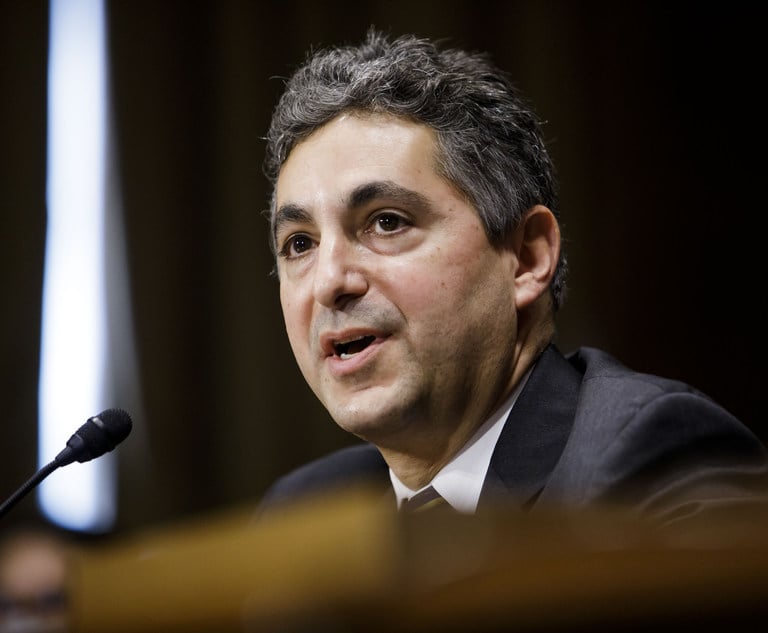
Design Patent Appeal Splinters Federal Circuit Panel + Susman Scores $163M Jury Verdict + Finnegan Protects Under Armour's House
Trending Stories
- 1NJ Jury Awards $4.5M After Woman Trips on Carpet
- 2Blake Lively Is Sued by Texas Crisis Specialist in Latest 'It Ends With Us' Lawsuit
- 3Pa. High Court to Decide Whether Flight in a High Crime Area Can Result in an Investigative Stop
- 4EB-5 Immigration Investor Program: a Win-Win Program, or Is It?
- 5People in the News—Feb. 6, 2025—Unruh Turner, Fox Rothschild
Who Got The Work
J. Brugh Lower of Gibbons has entered an appearance for industrial equipment supplier Devco Corporation in a pending trademark infringement lawsuit. The suit, accusing the defendant of selling knock-off Graco products, was filed Dec. 18 in New Jersey District Court by Rivkin Radler on behalf of Graco Inc. and Graco Minnesota. The case, assigned to U.S. District Judge Zahid N. Quraishi, is 3:24-cv-11294, Graco Inc. et al v. Devco Corporation.
Who Got The Work
Rebecca Maller-Stein and Kent A. Yalowitz of Arnold & Porter Kaye Scholer have entered their appearances for Hanaco Venture Capital and its executives, Lior Prosor and David Frankel, in a pending securities lawsuit. The action, filed on Dec. 24 in New York Southern District Court by Zell, Aron & Co. on behalf of Goldeneye Advisors, accuses the defendants of negligently and fraudulently managing the plaintiff's $1 million investment. The case, assigned to U.S. District Judge Vernon S. Broderick, is 1:24-cv-09918, Goldeneye Advisors, LLC v. Hanaco Venture Capital, Ltd. et al.
Who Got The Work
Attorneys from A&O Shearman has stepped in as defense counsel for Toronto-Dominion Bank and other defendants in a pending securities class action. The suit, filed Dec. 11 in New York Southern District Court by Bleichmar Fonti & Auld, accuses the defendants of concealing the bank's 'pervasive' deficiencies in regards to its compliance with the Bank Secrecy Act and the quality of its anti-money laundering controls. The case, assigned to U.S. District Judge Arun Subramanian, is 1:24-cv-09445, Gonzalez v. The Toronto-Dominion Bank et al.
Who Got The Work
Crown Castle International, a Pennsylvania company providing shared communications infrastructure, has turned to Luke D. Wolf of Gordon Rees Scully Mansukhani to fend off a pending breach-of-contract lawsuit. The court action, filed Nov. 25 in Michigan Eastern District Court by Hooper Hathaway PC on behalf of The Town Residences LLC, accuses Crown Castle of failing to transfer approximately $30,000 in utility payments from T-Mobile in breach of a roof-top lease and assignment agreement. The case, assigned to U.S. District Judge Susan K. Declercq, is 2:24-cv-13131, The Town Residences LLC v. T-Mobile US, Inc. et al.
Who Got The Work
Wilfred P. Coronato and Daniel M. Schwartz of McCarter & English have stepped in as defense counsel to Electrolux Home Products Inc. in a pending product liability lawsuit. The court action, filed Nov. 26 in New York Eastern District Court by Poulos Lopiccolo PC and Nagel Rice LLP on behalf of David Stern, alleges that the defendant's refrigerators’ drawers and shelving repeatedly break and fall apart within months after purchase. The case, assigned to U.S. District Judge Joan M. Azrack, is 2:24-cv-08204, Stern v. Electrolux Home Products, Inc.
Featured Firms
Law Offices of Gary Martin Hays & Associates, P.C.
(470) 294-1674
Law Offices of Mark E. Salomone
(857) 444-6468
Smith & Hassler
(713) 739-1250




